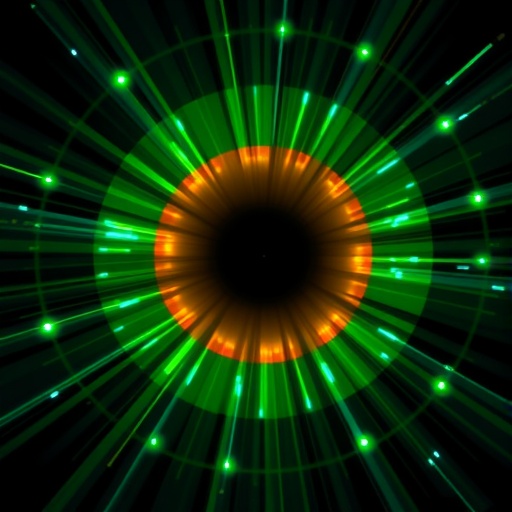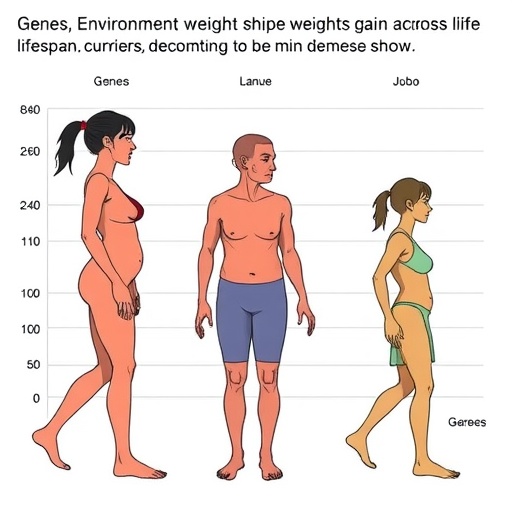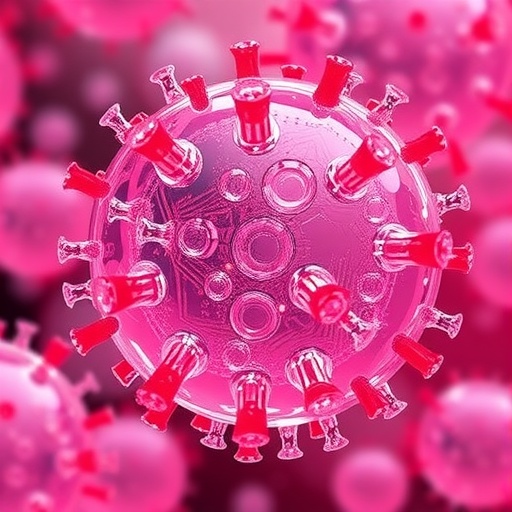In a groundbreaking advancement poised to redefine the boundaries of optical materials science, researchers have unveiled a novel approach to achieve optical nonlinearities exceeding 500 through innovative manipulation at the atomic scale. The capability of materials to exhibit strong, tunable nonlinear responses to light forms the cornerstone of next-generation technologies spanning ultrafast computing, super-resolution imaging, and quantum information processing. Traditionally, engineering materials with such pronounced optical nonlinearities has faced intrinsic physical and practical constraints, limiting their performance. Now, a strategic sublattice reconstruction within photon-avalanche upconversion nanomaterials promises to usher in an era of unprecedented optical sophistication.
Photon-avalanche upconversion materials have long been celebrated for their ability to generate nonlinear optical responses far surpassing many conventional substances, with previously reported nonlinearity orders reaching up to 60. These remarkable effects arise when low-energy photons are absorbed and converted to higher-energy emissions through a cascade of energy transfer events and population dynamics among the material’s internal states. Yet, attempts to push these boundaries further have encountered formidable challenges, including increased non-radiative losses and difficulties in controlling the intricate energy transfer pathways on the nanoscale.
The team behind this breakthrough has tackled these limitations through induced sublattice reconstruction—a precise atomic-level modification of the host crystal lattice that governs interaction dynamics among embedded dopant ions. Specifically, they have substituted lutetium ions into the host matrix, triggering notable local distortions of the crystal field environment. This distortion is not a mere structural anomaly but a deliberate tuning parameter that amplifies cross-relaxation processes. Cross-relaxation, a critical mechanism responsible for redistribution and accumulation of excited states, becomes exceptionally efficient under these modified conditions, dramatically enhancing the photon avalanche effect.
.adsslot_wiLBGhpTrK{width:728px !important;height:90px !important;}
@media(max-width:1199px){ .adsslot_wiLBGhpTrK{width:468px !important;height:60px !important;}
}
@media(max-width:767px){ .adsslot_wiLBGhpTrK{width:320px !important;height:50px !important;}
}
ADVERTISEMENT
Such intensified cross-relaxation cascades enable the nonlinear response to climb to staggering new heights, surpassing an order of magnitude greater than formerly achievable levels. The optical nonlinearity exceeding 500 reported by the researchers represents a quantum leap, accelerating the material’s sensitivity and responsiveness to incident photons. This leap induces a profound alteration in how these nanomaterials interact with light, granting them previously unattainable dynamic range and control for various optical applications.
Beyond the impressive optical resolution, the newly developed materials exhibit intriguing spatial heterogeneity in photon-avalanche performance across single nanocrystals. This regional differentiation implies that within an individual nanoparticle, optical behavior varies—a phenomenon likely rooted in microscopic variations of lattice distortion and local defect landscapes. Such spatially resolved nonlinear behavior not only enriches the fundamental understanding of photon-avalanche mechanisms but also opens novel routes for engineering nanoparticle functionalities tailored at the nanoscale, potentially enabling multiplexed or multicolor imaging strategies within a single particle.
The implications of this work extend far beyond imaging. Enhanced nonlinearities pave the way for ultra-sensitive optical sensing, where minute changes in an environment can be detected through pronounced shifts in fluorescence or absorption signals. In integrated photonics, these materials could function as ultra-efficient on-chip optical switches, essential for managing light flows in photonic circuits with near-zero latency. Additionally, the materials hold promise in the burgeoning field of infrared quantum counting, offering precise photon detection capabilities vital for quantum communication and computing.
From a materials science perspective, the ability to induce and control local lattice distortions through carefully chosen ion substitutions represents a versatile and powerful strategy. Lutetium’s ionic radius and electronic configuration afford an optimal balance of structural perturbation without compromising crystal integrity or luminescent efficiency. This design principle may prove broadly applicable to other host and dopant combinations, inspiring a new generation of nanomaterials with tailored nonlinear responses customized for specific technological roles.
The experimental sophistication underscoring this research is equally notable. Detecting and quantifying nonlinearities surpassing 500 required delicate calibration of excitation intensities, meticulous synthesis of uniformly doped nanoparticles, and advanced microscopy capable of resolving nanometer scale details with high fidelity. The integration of optical characterization with atomic-scale structural analysis was crucial, enabling the correlation of photophysical properties with microscopic lattice alterations. This holistic approach sets a benchmark for future research aiming to explore structure-property relationships in complex optoelectronic materials.
As the field progresses, attention will likely shift toward scalability and integration. Engineering such materials into practical devices—such as lab-on-chip platforms or portable super-resolution microscopes—necessitates overcoming fabrication and stability challenges. However, the fundamental advance presented here provides a robust scientific foundation and proof-of-concept that unprecedented optical nonlinearities are achievable outside theoretical speculation.
In summary, the demonstration of optical nonlinearities exceeding 500 through sublattice reconstruction marks a pivotal moment in the evolution of optically active nanomaterials. By harnessing the interplay between crystal structure and energy transfer dynamics mediated by carefully orchestrated lattice distortions, researchers have unlocked a capability that augurs transformative impacts across scientific disciplines and emerging technologies. From unveiling nanoscale biological structures with unmatched clarity to enabling novel quantum photonic devices, this work charts a thrilling pathway into a future where light-matter interactions can be engineered with near-atomic precision and extraordinary efficacy.
Subject of Research: Optical nonlinearities and photon-avalanche upconversion nanomaterials enhanced by sublattice reconstruction.
Article Title: Optical nonlinearities in excess of 500 through sublattice reconstruction.
Article References:
Chen, J., Liu, C., Xi, S. et al. Optical nonlinearities in excess of 500 through sublattice reconstruction. Nature (2025). https://doi.org/10.1038/s41586-025-09164-y
Image Credits: AI Generated
Tags: atomic scale manipulation in materialsenergy transfer dynamics in nanomaterialsnext-generation optical technologiesnonlinear optical responsesoptical nonlinearities enhancementovercoming non-radiative losses in materialsphoton-avalanche upconversionquantum information processing advancementssublattice reconstructionsuper-resolution imaging technologiestunable optical materialsultrafast computing materials





